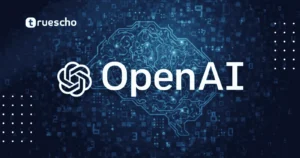Parallel Agent Architecture: Boost Efficiency with LangGraph
The rapid evolution of artificial intelligence has reshaped the way we solve complex problems. Implementing a Parallel Agent Architecture allows multiple AI agents, each with a specialized role, to work simultaneously toward a common goal. In this article, we explain the benefits of this approach, discuss how to implement it with LangGraph, and share practical tips to boost performance and reliability in your projects.
Table of Contents
Understanding Parallel Agent Architecture
When addressing multifaceted challenges, breaking down the overall problem into smaller, specialized tasks leads to more efficient and accurate outcomes. The concept behind a Parallel Agent Architecture is simple: divide the work among multiple agents, each focused on a narrowly defined task, and let them process in parallel. This approach mirrors high-performing human teams, where each member’s unique skill contributes to an exponentially stronger collective result.
Consider the following quote, which captures this idea perfectly:
“Complex problems always yield better results when tackled by a team of people with different specializations. With AI agents, individual expertise combined creates exponentially better solutions.” — Expert Insight
This methodology is particularly effective because AI agents, like their human counterparts, perform best when their roles and goals are clearly defined. When an AI agent is overloaded with broad instructions, it may “hallucinate” or produce unreliable output. By splitting tasks among specialized agents running in parallel, each agent can focus on its designated function, making the entire system more robust and efficient.
Read also: N8N MCP AI Agent: INSANE NA10 Integration Update
Benefits of a Parallel Agent Approach
Employing a Parallel Agent Architecture provides several clear advantages:
- Increased Efficiency: Parallel processing reduces overall execution time, as tasks are handled simultaneously.
- Improved Accuracy: Each agent is fine-tuned for a specific function, leading to fewer errors and improved output quality.
- Better Scalability: As new requirements arise, additional specialized agents can be added without redesigning the entire system.
- Enhanced Adaptability: The modular nature of the architecture means that changes in one part do not propagate errors across the entire system.
Implementing Parallel Agent Architecture with LangGraph
LangGraph is a powerful framework that facilitates the orchestration and communication between multiple agents in parallel. By abstracting the complexity of workflow management, LangGraph allows developers to define nodes, state, and edges with clarity and precision.
The overall implementation involves three key steps:
- Defining the State: Establish the core data points that need to be maintained across the entire process. For example, in an application like a travel planner assistant, such state data might include user preferences, conversation history, and aggregated results from specialized agents.
- Defining the Nodes: Each node represents a functional unit, such as gathering user inputs, fetching flight recommendations, or synthesizing final outputs. This modularity ensures that each agent can be refined or replaced independently.
- Setting Up the Graph: The nodes are connected using edges that define the workflow. This structure allows for conditional routing based on the available information and even supports human-in-the-loop scenarios, where the system can pause and wait for additional user input.
For more information on LangGraph, you can visit its GitHub repository at https://github.com/langgraph/langgraph. The official documentation provides detailed guidance on setting up and integrating various nodes into a robust workflow.
Read also: N8N AI Agent: Breakthrough MCP Update
Key Steps in Building Your Parallel Agent System
To successfully implement a Parallel Agent Architecture using LangGraph, consider these actionable tips:
- Define Clear Dependencies: Begin by outlining all dependencies for each agent. This includes API keys, database connections, and any necessary configuration data. Clear dependency management prevents errors when agents invoke external services.
- Specify Agent Roles Thoroughly: Create detailed system prompts for each agent. A well-defined prompt decreases the chance of confusion during execution.
- Use Structured Outputs: Guarantee that each agent returns outputs in a predefined structure, which simplifies the process of aggregating results and validating data.
- Implement Robust Error Handling: Include automatic retries and error-checking mechanisms to handle any unforeseeable interruptions in the workflow.
- Test in Isolation and in Parallel: Validate the performance of each agent independently before integrating them into the final graph. This step minimizes potential integration issues later.
Read also: Firebase Studio Alternatives
A Mid-Article Productivity Boost
Best Practices for Building a Successful Parallel Agent System
As you refine your Parallel Agent Architecture, consider the following best practices:
- Regularly Update Agent Prompts: Fine-tuning the system prompts of each agent can drastically improve performance over time. Continuously review and update these prompts based on real-world results and user feedback.
- Monitor Performance Metrics: Employ monitoring tools to track the performance and response times of individual agents. Tools such as Prometheus or Grafana can provide insights into bottlenecks or failures within the system.
- Maintain Detailed Documentation: Document the workflow, dependencies, and specific roles of each agent. This clarity aids future development efforts and ensures that the system remains adaptable to new challenges.
- Leverage Community Resources: Explore forums and official documentation for LangGraph and other frameworks like Pydantic to stay updated with best practices and new features.
Embrace the future of AI by adopting a parallel approach to problem-solving and discover the full potential of your systems.
Read also: Revel opens first EV fast charging hub in San Francisco






